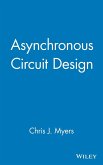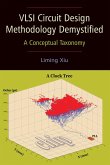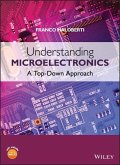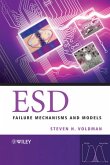The first edition of this book published in 2004 and has proved to be both a valuable textbook and a handy desk reference. This new edition continues to provide students with an accessible guide to an important field. Fully updated, it has five new chapters that incorporate the recent developments in the field. CMOS-MEMS integration, Moore's law and scaling trends sections have been updated with the latest in CMOS generation findings. Surface micromachining has been given a whole chapter, as have the topics of polymer microprocessing and glass microprocessing.
This accessible text is now fully revised and updated, providing an overview of fabrication technologies and materials needed to realize modern microdevices. It demonstrates how common microfabrication principles can be applied in different applications, to create devices ranging from nanometer probe tips to meter scale solar cells, and a host of microelectronic, mechanical, optical and fluidic devices in between. Latest developments in wafer engineering, patterning, thin films, surface preparation and bonding are covered.
This second edition includes:
expanded sections on MEMS and microfluidics related fabrication issues
new chapters on polymer and glass microprocessing, as well as serial processing techniques
200 completely new and 200 modified figures
more coverage of imprinting techniques, process integration and economics of microfabrication
300 homework exercises including conceptual thinking assignments, order of magnitude estimates, standard calculations, and device design and process analysis problems
solutions to homework problems on the complementary website, as well as PDF slides of the figures and tables within the book
With clear sections separating basic principles from more advanced material, this is a valuable textbook for senior undergraduate and beginning graduate students wanting to understand the fundamentals of microfabrication. The book also serves as a handy desk reference for practicing electrical engineers, materials scientists, chemists and physicists alike.
www.wiley.com/go/Franssila_Micro2e
This accessible text is now fully revised and updated, providing an overview of fabrication technologies and materials needed to realize modern microdevices. It demonstrates how common microfabrication principles can be applied in different applications, to create devices ranging from nanometer probe tips to meter scale solar cells, and a host of microelectronic, mechanical, optical and fluidic devices in between. Latest developments in wafer engineering, patterning, thin films, surface preparation and bonding are covered.
This second edition includes:
expanded sections on MEMS and microfluidics related fabrication issues
new chapters on polymer and glass microprocessing, as well as serial processing techniques
200 completely new and 200 modified figures
more coverage of imprinting techniques, process integration and economics of microfabrication
300 homework exercises including conceptual thinking assignments, order of magnitude estimates, standard calculations, and device design and process analysis problems
solutions to homework problems on the complementary website, as well as PDF slides of the figures and tables within the book
With clear sections separating basic principles from more advanced material, this is a valuable textbook for senior undergraduate and beginning graduate students wanting to understand the fundamentals of microfabrication. The book also serves as a handy desk reference for practicing electrical engineers, materials scientists, chemists and physicists alike.
www.wiley.com/go/Franssila_Micro2e








